From August 3 to August 10, 2025, at the invitation of the Department of Roads under Nepal’s Ministry of Infrastructure and Transport, Tribhuwan University, and other institutions, Professor Baochun Chen from our college traveled to Nepal to provide technical guidance for the construction of the country’s first concrete-filled steel tube arch bridge and conduct corresponding academic exchanges.
Concrete-filled steel tube arch bridges were originally invented in China, with relevant technologies leading the world. Professor Baochun Chen has long been committed to the research and application of concrete-filled steel tube arch bridges. He has published monographs titled Concrete-Filled Steel Tube Arch Bridges in multiple languages (Chinese, English, and Vietnamese), edited the Chinese and English versions of the national standard Technical Code for Concrete-Filled Steel Tube Arch Bridges (GB 50923-2013), as well as the English version of the industry standard Design Code for Highway Concrete-Filled Steel Tube Arch Bridges (JTG/T D65-06-2015). His contributions have actively promoted the technological development and international application of concrete-filled steel tube arch bridges. Due to their excellent mechanical performance and economic efficiency, the technologies related to concrete-filled steel tube arch bridges have attracted widespread attention from the international bridge community. In 2017, Professor Chen Baochun engaged in design consulting cooperation for Vietnam’s largest-span feiniao-style concrete-filled steel tube arch bridge, “Hoang Van Thu Bridge,” achieving a remarkable international demonstration effect in application.
Nepal’s Ramdi Bridge, the country’s first concrete-filled steel tube arch bridge, has a main arch span of 119 meters. Its design adheres to the English version of China’s national standard Technical Code for Concrete-Filled Steel Tube Arch Bridges and refers to the English version of the monograph Concrete-Filled Steel Tube Arch Bridges. During the design phase, Professor Baochun Chen provided a design consulting report for the bridge. Currently, the bridge is facing technical issues during the critical construction period. This trip involves on-site technical guidance and in-depth exchanges with leaders and experts from the Department of Roads under Nepal’s Ministry of Infrastructure and Transport on the promotion and application of concrete-filled steel tube arch bridges in Nepal.
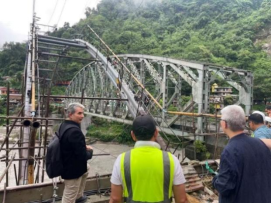

Subsequently, Professor Baochun Chen and his delegation visited Tribhuwan University, where they held discussions with leaders and faculty members of the Faculty of Engineering. Both parties conducted extensive explorations on strengthening exchanges, talent cultivation, technical cooperation, and other areas between the two institutions. Professor Baochun Chen gave a detailed introduction to the College of Civil Engineering, Fuzhou University, to the teachers and students of the Faculty of Engineering. Additionally, Professor Xiangguo Wu and Researcher Junping Liu delivered academic reports respectively entitled Concrete and CFST Arch Bridges, Progress and Prospects of Application Research on Ultra High Performance Concrete Structures, and Preparation of Ultra-high Performance Mortar (UHPM) and Its Application in Stone Arch Bridges, which were warmly received by all attending teachers and students.
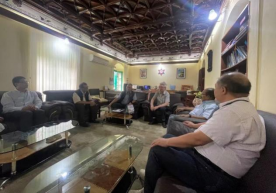
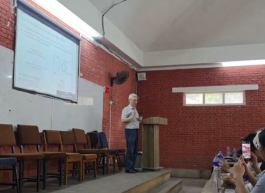
The Faculty of Engineering at Tribhuwan University has maintained a sound cooperative relationship with our college. Since the signing of a Memorandum of Understanding (MoU) in 2002, our college has educated a total of three doctoral students from Nepal. Among them, Dr. Bijaya Jaishi, who graduated in 2005, was the first foreign doctoral graduate trained by a Fujian provincial university. Currently, Dr. Bijaya Jaishi serves as the Director of the Department of Roads under Nepal’s Ministry of Transport and Infrastructure. Dr. Krishna Shrestha, a 2012 graduate, is now working at the local council of Victoria, Australia, where he is mainly responsible for asset management of local bridge infrastructure. Dr. Raghabendra Yadav, who graduated in 2019, is currently one of the key designers of Nepal’s first expressway.
During their visit to Nepal, Professor Baochun Chen and his delegation also conducted technical exchanges with institutions including the Nepal Structural Engineers Association. Professor Baochun Chen, Professor Xiangguo Wu, and Researcher Junping Liu delivered academic reports respectively entitled Less is more -- An introduction of jointless bridges, Prospects of Application Research on Ultra High Performance Concrete in Bridges Structures, and Construction of Arch bridges. Our college has a solid foundation in the research and application of jointless bridges and UHPC bridges. The Secretariat of the International Jointless Bridge Association, the Chinese Group of the Asian Concrete Federation (ACF), and the UHPC Technical Committee (TC) of ACF are all affiliated with our college. The aforementioned exchange activities have laid a sound foundation for expanding the academic influence of our college and promoting the application of China’s jointless bridge, UHPC bridge, and arch bridge construction technologies in Nepal.
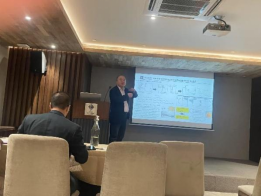
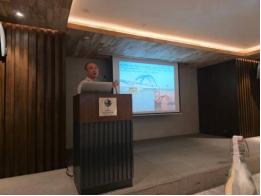
This exchange visit has strengthened the ties between our college and the Faculty of Engineering at Tribhuwan University, continued the traditional friendship, created new cooperation opportunities, and reinforced the international characteristics of our college. It also demonstrates our college’s actions and responsibilities in actively responding to the national “Belt and Road” Initiative, serving the country’s major strategic needs, and aligning with future development directions.